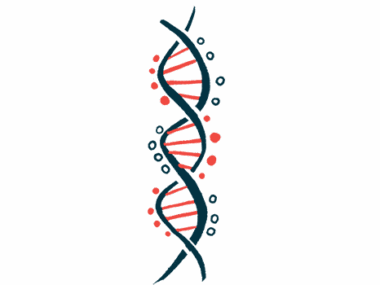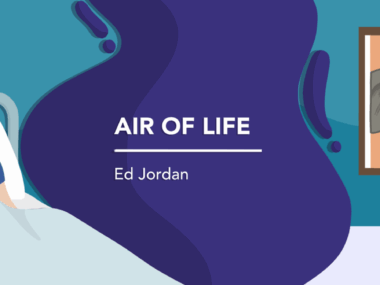Shifting Through Fight, Flight, Freeze, Fawn … Healing
Written by |

Now, years past the worst of it all — you know, the health crises — I feel safe enough to ponder my trauma and its lingering tolls.
Psychologists identify four trauma responses: fight, flight, freeze, fawn. The fight response triggers aggression, flight manifests as avoidance, freeze as inaction, and fawn exhibits excessive affection to turn away threats.
I’ve been wondering how each has played a role in my yesterday and now. To help me, and maybe you, I dug through memories from my septic shock episode stretching from June to July 2016. Although the four responses aren’t necessarily “phases” of trauma, one leading to the next, that’s how they manifested in my story.
My hope is that by describing these responses, others with trauma can label their own responses and receive help from a professional.
Fight
If I was deaf by then, maybe I’d have heard the pffffffft of steam blasting from my broken body — years of pent-up rage over my illness, ableism, alienation. Choking, my legs kicked out like a hanged man’s while my hands scrambled to smack away masked monsters wielding burning scalpels and long needles. In my terror, my conscience screamed, “FIGHT BACK.”
Later, a respiratory therapist said, “For a small guy, you threw a hell of a punch.” Dad agreed.
I remember only blinding rage as hands seized my suffocating ribs, cramming me down into soiled sheets. Then, Velcro straps cut into my wrists and ankles — restrained like a madman. And I was mad, man. Unable to move, I could only cry out. My ex-girlfriend said I spat bitterly how much I hated everyone in that room. Then, hallucinations consumed me.
Flight
Escaping the hallucinations days later didn’t restore my sanity; I entered a different flavor of insanity. I had the dignity of a lab rat after weeks without privacy, adequate sunshine or fresh air, sleep, or even the liberty to wipe my own butt. Destroyed, I’d been lying in sweat- and urine-stained sheets, surrounded by buckets of vomit and mucus. Staff came in all hours of the day and night without knocking, and 23-year-old me would hide beneath his sheets, like a child, begging them to leave me alone.
Once strong enough to stand, I hid behind my hospital room’s closet and in the restroom. The moment medical equipment as innocent as a lung function machine entered the room, I’d melt away into a panic attack.
Freeze
Amid unceasing anxiety and time-freezing sleepless nights, I befriended an array of numbing, multi-syllabled substances like fentanyl, clonazepam, alprazolam. Anything to help me dissociate. Emotions beyond dread and shame had been crushed from my spirit, and snuffling that last bit of feeling from my body became necessary to coping with the myriad barrages of tragedies. My lungs were failing, doctors didn’t see hope for restoring my hearing, and no transplant team would so much as consider my case beyond a glance at my towering health record.
I’d barely acknowledge each bit of bad news, would simply let it all float past in the river of my barely-there consciousness. Too weak to fight, too slow to run, what else was I to do but hunker down and take the blows? I made my limbs limp as people lifted them then and again for injections and testing, and made my mind limper.
Fawn
When a transplant team agreed to examine my case, I knew I had abysmal odds of being accepted to their organ waiting list. I felt like a kid stepping up to the plate in a Major League Baseball game. And what can the kid do but act extra cute in the hopes that the pitcher won’t be ruthless? I was playing hardball with a shattered mind, shattered body.
Thanks to organ shortages, the transplant evaluation process is a lot like a job interview, but one that means life or death. Social workers and psychologists inquired about my contributions to society, my social life, how I’d get the best use of new lungs, if I was brave and emotionally stable.
My strategy was to charm the pants off my evaluators. I thought I couldn’t show weakness, frowns, fear. I had to be vibrant, lovable, valuable. Weeks before, I could barely sit up or recognize my humanity. Now, I had to lift my chin, puff out my chest, wear my Sunday best, smile til my jaw ached. In a transplant evaluation, you can’t appear so healthy that you don’t deserve new lungs, but you can’t look so weak that doctors would bet you wouldn’t survive the harrowing surgery and recovery. My weakness was unavoidably evident, but if I was charismatic enough to look like a real fighter … maybe I’d live.
A slow kind of healing
Eventually I got the transplant. I’d be lying if I said the evaluation hadn’t set in my mind that I can’t “waste” my lungs. I’d live years haunted by survivor’s guilt, continually overextending myself to “prove” my new life’s worth. Even today I slip into thinking I need to charm to survive, that I need to be upbeat when my body begs for rest. When crisis strikes, I find myself again deadening my emotions or escaping through far-off travel. (But my “fight” long burned out, I have difficulty feeling anger.)
I’m slowly unlearning these mindsets. I don’t need to unceasingly smile and charm and volunteer when exhausted. I don’t need to say sorry for things out of my control. I can confront and resolve conflicts without fleeing. It’s healthy to feel the full spectrum of emotions, including anger.
One day I’m liberated from trauma, the next I’m terrorized. But liberation feels increasingly more my norm. This slow, nonlinear healing has required uncomfortable self-validation that I deserve rest, boundaries, dignity, joy. But realizing each trauma response as a documented psychological phenomenon has given me the upper hand as I rationalize the confusion and seek response-specific remedies like rest, counseling, grounding techniques, identity exploration, lament, solitude, and affirmation. Finally, I’m enjoying peace.
Note: Cystic Fibrosis News Today is strictly a news and information website about the disease. It does not provide medical advice, diagnosis, or treatment. This content is not intended to be a substitute for professional medical advice, diagnosis, or treatment. Always seek the advice of your physician or other qualified health provider with any questions you may have regarding a medical condition. Never disregard professional medical advice or delay in seeking it because of something you have read on this website. The opinions expressed in this column are not those of Cystic Fibrosis News Today or its parent company, Bionews, and are intended to spark discussion about issues pertaining to cystic fibrosis.








Leave a comment
Fill in the required fields to post. Your email address will not be published.